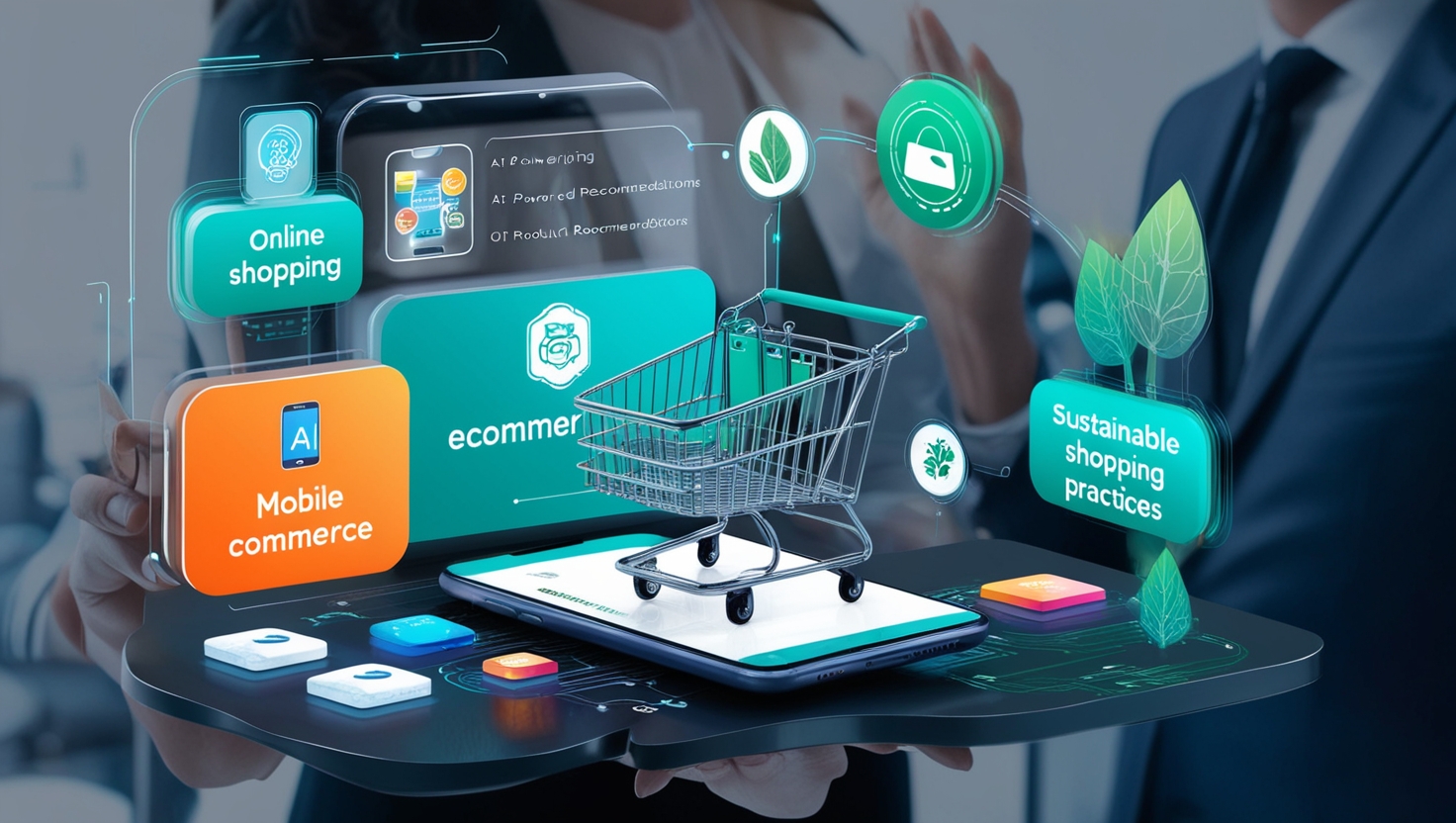
Ecommerce has dramatically changed the way we shop and do business. What started as a simple online marketplace has evolved into an expansive digital ecosystem where innovation, convenience, and technology come together to create new experiences for both businesses and consumers. With the rapid pace of change in the digital world, it’s crucial for businesses to stay ahead of the curve and embrace the trends that will shape the future of eCommerce.
At Sysartx, we’re always keeping an eye on emerging trends to help businesses thrive in this ever-evolving space. Let’s take a look at the key trends that will define the future of eCommerce and how you can use them to take your business to the next level.
1. AI and Personalization: Tailoring the Shopping Experience
Artificial Intelligence (AI) is making waves in eCommerce by helping businesses provide a more personalized shopping experience. Imagine browsing through an online store that already knows your preferences and can suggest products you’ll love. That’s the power of AI—helping brands offer hyper-targeted recommendations based on your past behavior, preferences, and even your browsing patterns. It’s all about making the shopping experience more intuitive and relevant for customers.
For businesses, embracing AI doesn’t have to mean big investments in complex systems. Simple changes like AI-powered product recommendations or chatbot customer support can go a long way in creating a more personalized experience for your customers, boosting sales, and encouraging loyalty.
2. Mobile Commerce: Shopping On-The-Go
The rise of smartphones means that mobile commerce (m-commerce) is becoming a dominant force in the eCommerce world. Whether it’s through a sleek mobile app or a mobile-friendly website, customers are now able to shop anywhere, anytime. As a result, mobile shopping has grown exponentially, and it’s expected to account for more than 70% of total eCommerce sales in the coming years.
For eCommerce businesses, this means prioritizing mobile optimization. Ensuring that your website loads quickly, offers smooth navigation, and has an easy-to-use checkout system is no longer a luxury—it’s a necessity. Offering mobile payment options, like Apple Pay or Google Pay, can also make the shopping experience even easier for customers, allowing them to complete purchases with a single tap.
3. Sustainability and Ethical Practices: A Must-Have for Modern Consumers
Consumers today are more mindful than ever about the ethical and environmental impact of their purchases. As a result, sustainability in eCommerce is not just a buzzword—it’s becoming an essential aspect of the customer experience. Customers want to know that the brands they support are making a positive impact on the world, whether through eco-friendly packaging, ethical sourcing, or carbon-neutral shipping practices.
We believe that businesses can make a difference by embracing sustainability, which not only helps the planet but also builds trust with your customer base. By choosing eco-friendly options, like biodegradable packaging or carbon offset programs, you can appeal to customers who prioritize ethical values, leading to long-term loyalty and satisfaction.
4. AR and VR: Making Online Shopping More Interactive
Augmented Reality (AR) and Virtual Reality (VR) are changing the way we shop online by offering immersive experiences that bring products to life. With AR, shoppers can virtually try on clothes, accessories, or even see how furniture fits in their living room—all from their phone or computer. VR takes it a step further by allowing shoppers to experience a completely virtual store, giving them the feeling of walking through a physical store without leaving their homes.
These technologies aren’t just fun—they’re incredibly useful in enhancing the shopping experience and reducing purchase hesitation. For businesses, integrating AR and VR can lead to higher conversion rates and more engaged customers. Whether it’s helping someone try on a pair of shoes virtually or allowing them to see how a piece of art looks on their wall, the possibilities are endless.
5. Subscription Models: Building Long-Term Customer Relationships
The rise of subscription-based services in eCommerce is another trend that’s here to stay. Whether it’s monthly product boxes, subscription-based services, or exclusive membership benefits, customers are increasingly looking for ways to subscribe to the products and services they love. Subscriptions offer eCommerce businesses predictable revenue while fostering long-term relationships with customers.
If you’re considering a subscription model for your business, think about how you can tailor the experience to meet the specific needs of your customers. Personalizing subscriptions and offering unique, curated products will help create value for your customers and keep them coming back month after month.
6. Voice Commerce: Shopping by Voice
With the rise of voice assistants like Amazon Alexa, Google Assistant, and Apple Siri, voice commerce is becoming an increasingly popular way to shop. Customers can now make purchases, track orders, and search for products just by speaking into their device. It’s as easy as saying, “Hey Alexa, order my favorite shampoo,” or “Siri, find me a new jacket.”
For eCommerce businesses, optimizing your platform for voice search and voice-enabled shopping is a smart move. By making sure your products and listings are voice-search-friendly, you’ll make it easier for customers to find and purchase what they need with just a simple command.
7. Social Commerce: Shopping Directly Through Social Media
Social media isn’t just for connecting with friends anymore—it’s also becoming a major sales channel. Social commerce allows customers to browse and buy products directly on platforms like Instagram, Facebook, and TikTok, making shopping a seamless part of their social experience. With shoppable posts, businesses can turn their social media presence into a powerful sales tool.
For eCommerce businesses, integrating social commerce into your strategy can help you reach new audiences and convert social media engagement into sales. With social media platforms becoming more shoppable, it’s important to have a presence where your customers are already active.
8. Fast and Free Shipping: Meeting Customer Expectations
In today’s competitive eCommerce environment, customers expect fast and free shipping. With giants like Amazon setting the bar for next-day or same-day delivery, businesses need to streamline their shipping processes to meet these demands. Offering fast, affordable, or free shipping can be a key differentiator for eCommerce businesses and can drive more conversions.
We understand the importance of delivering an exceptional customer experience, which includes providing fast, reliable shipping options. Whether it’s through free shipping on orders over a certain amount or offering expedited delivery, ensuring that your customers get their products quickly and cost-effectively will help you stand out from the competition.
Conclusion
The future of eCommerce is bright, with new technologies and trends changing the way businesses interact with customers. From AI-powered personalization to sustainability initiatives, these trends are transforming the eCommerce landscape, making it easier than ever for businesses to create meaningful connections with their customers.
At Sysartx, we’re committed to helping businesses navigate these changes and take advantage of the opportunities that the future of eCommerce has to offer. By staying ahead of the trends and embracing new technologies, your business can thrive in this exciting, ever-evolving industry.


